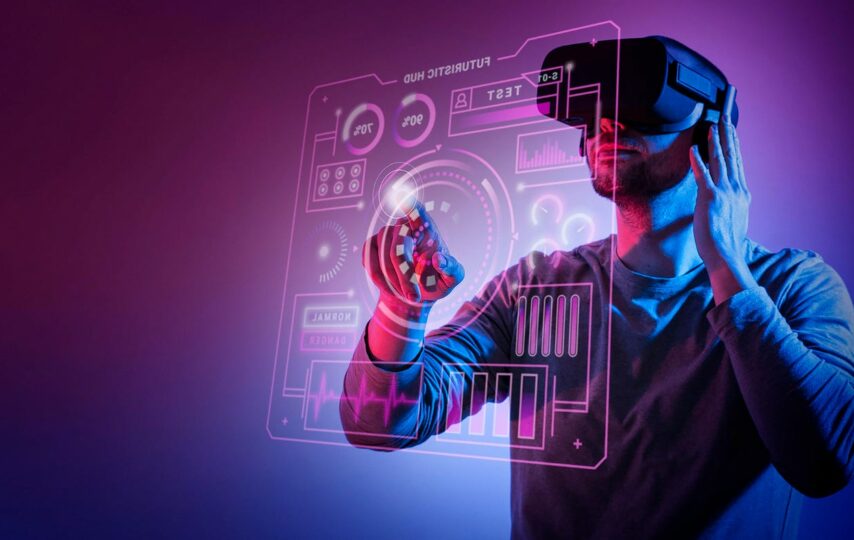Virtual reality (VR) development services have become a cornerstone in reshaping how we experience and interact with digital content. From its inception to the present day, VR has evolved into a powerful tool with applications spanning gaming, education, healthcare, and various industries. In this article, we delve into the world of virtual reality, exploring its evolution, applications, key features, challenges, and the importance of professional development services.
The Evolution of Virtual Reality
virtual reality development services has come a long way from its conceptualization to its current state. In the early days, primitive VR systems laid the groundwork for what would later become a revolutionary technology. Significant milestones, such as the development of the first head-mounted display, have propelled VR into the mainstream, with continuous advancements shaping its trajectory.
Applications of Virtual Reality
One of the most compelling aspects of virtual reality lies in its diverse applications. Initially recognized for its role in gaming and entertainment, VR has expanded its reach into healthcare, education, and business. From simulating medical procedures to enhancing training modules, the applications of VR are limitless.
Additionally, one noticeable application of this technology is augmented reality for meetings. Think of merging virtual avatars into the boardroom discussions and going beyond physical boundaries to make actual participation possible. Virtual reality was not a regarded as a possibility just a few years back. Today, though, with cutting-edge technology, it promises to transform the landscape of corporate interactions, rolling in a new era of unparalleled connectivity and productivity.
Importance of Professional Virtual Reality Development
As businesses increasingly recognize the potential of VR, the demand for professional development services has surged. Investing in customized VR solutions offers a competitive edge, providing businesses with unique and tailored experiences for their audiences. The importance of professional virtual reality development cannot be overstated, considering the nuanced requirements of different industries.
Key Features in Virtual Reality Development
The success of virtual reality experiences hinges on several key features. Graphic quality, immersive environments, interactivity, and user engagement are paramount. Developers strive to create experiences that not only meet but exceed user expectations, ensuring a seamless and captivating virtual journey.
Challenges in Virtual Reality Development
While the potential of VR is vast, developers face significant challenges. Technical hurdles, compatibility issues, and the need for widespread adoption pose obstacles to the seamless integration of VR into daily life. Overcoming these challenges requires innovation and collaboration within the development community.
Virtual Reality Development Tools and Platforms
A myriad of tools and platforms facilitate virtual reality development. From established platforms to emerging tools, developers have a plethora of options to choose from. A brief comparison helps businesses make informed decisions when embarking on their VR development journey.
Steps in Virtual Reality Development
The process of bringing a virtual reality experience to life involves meticulous planning, concept design, coding, and programming. Each step contributes to the creation of a virtual environment that resonates with users and fulfills specific objectives.
Case Studies: Successful Virtual Reality Projects
Examining successful virtual reality projects provides insights into the tangible benefits experienced by businesses. From increased customer engagement to enhanced learning outcomes, these case studies highlight the transformative power of VR.
Future Trends in Virtual Reality Development
As technology continues to advance, so too does the landscape of virtual reality development. Emerging trends, such as augmented reality integration and haptic feedback, hint at the exciting possibilities that lie ahead. Predicting the future of VR offers businesses a glimpse into what to expect and how to stay ahead of the curve.
How to Choose the Right Virtual Reality Development Partner
Selecting the right virtual reality development partner is crucial for a successful project. Factors such as expertise, communication, and collaboration play pivotal roles in the development process. Businesses must carefully consider these factors to ensure a seamless and effective partnership.
Virtual Reality and User Experience
User experience is at the heart of virtual reality development. Designing experiences that captivate and engage users requires a deep understanding of human interaction and psychology. VR’s role in enhancing user experience is a key consideration for developers and businesses alike.
The Cost of Virtual Reality Development
Understanding the costs associated with virtual reality development is essential for budgeting purposes. From initial planning to the deployment of VR solutions, breaking down costs provides businesses with a clear picture of the financial investment required.
Advancements in Virtual Reality Hardware
Hardware innovations contribute significantly to the evolution of virtual reality. From more comfortable headsets to improved motion tracking, advancements in VR hardware enhance the overall user experience. Staying informed about these developments allows businesses to align their strategies with the latest technological trends.
Conclusion
In conclusion, virtual reality development services are transforming how we perceive and interact with digital content. From entertainment to education and beyond, VR’s impact is far-reaching. Businesses that embrace the potential of VR stand to gain a competitive advantage in a digitally evolving landscape. As technology continues to advance, the future of virtual reality promises even more exciting possibilities.
Frequently Asked Questions (FAQs)
- Q: What industries benefit the most from virtual reality development services?
- A: Virtual reality development services have diverse applications, benefiting industries such as gaming, healthcare, education, and business.
- Q: How can businesses choose the right virtual reality development partner?
- A: Businesses should consider factors like expertise, communication, and collaboration when selecting a virtual reality development partner.
- Q: What are the key features that contribute to a successful virtual reality experience?
- A: Graphic quality, immersive environments, interactivity, and user engagement are key features in virtual reality development.
- Q: Are there any challenges in virtual reality development that developers face?
- A: Technical challenges, compatibility issues, and the need for widespread adoption are common hurdles in virtual reality development.
- Q: What are the future trends in virtual reality development?
- A: Emerging trends include augmented reality integration and haptic feedback, signaling exciting possibilities for the future of virtual reality.







